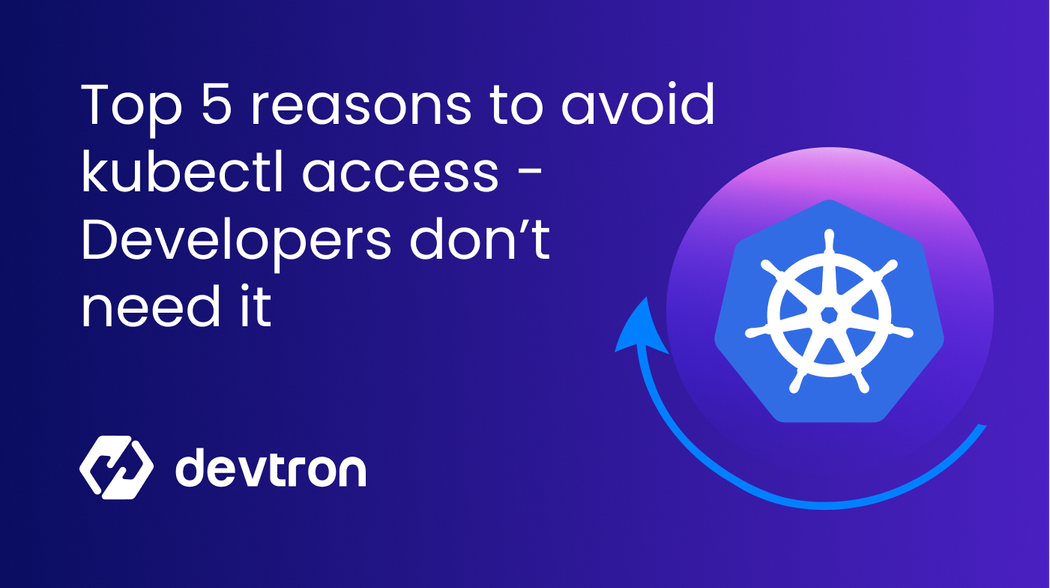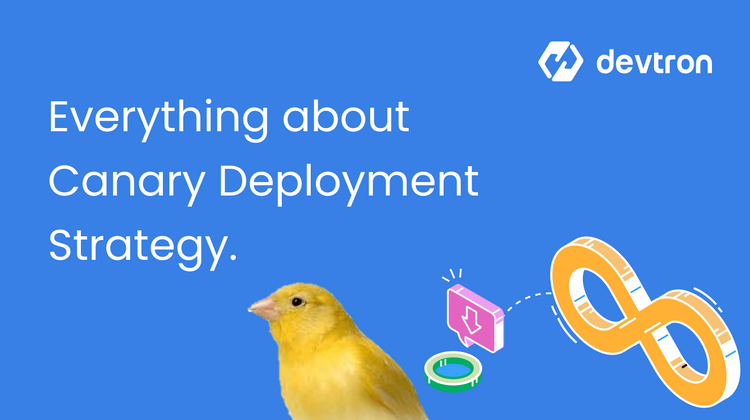When working with Kubernetes, many organizations provide developers direct access to clusters via kubectl. While kubectl is a powerful command-line interface (CLI) that administrators love, it isn’t the most efficient or developer-friendly CLI. Giving developers kubectl access often results in unnecessary complexity, bottlenecks, and even risks that affect both developer productivity and operational stability.
Developers are meant to write good-quality code, kubectl is not something they should be struggling with. In this blog, we’ll break down the potential challenges that developers face with the kubectl command line utility and show how a Kubernetes dashboard like Devtron can simplify Kubernetes for all, reduce risks, and boost productivity.
Why kubectl Doesn’t Work for Developers
While the idea of allowing developers to access Kubernetes clusters directly via kubectl may sound practical at first, it introduces a range of challenges.
Steep Learning Curve
Kubernetes is complex, and mastering kubectl requires understanding a host of commands and cluster concepts. Expecting developers to juggle with pods, deployments, services, namespaces, resource quotas, and their core work adds unnecessary cognitive load.
Even basic tasks, such as checking pod logs or scaling a deployment, require precise commands. A typo in a kubectl command can cause unintended disruptions, such as scaling down critical workloads or deleting resources accidentally.
Human Error Risks
A developer working under tight deadlines might issue commands without fully understanding the impact, for instance, kubectl delete <namespace> would delete the namespace along with all the workloads running in that namespace. This can be dangerous if the namespace consists of some important cluster component or workloads used in production, leading to a downtime of the service.
While Role-Based Access Control (RBAC) policies help mitigate risks, managing fine-grained access across teams is tedious and doesn’t eliminate human error entirely.
Operational Overhead
Developers already manage multiple tasks—writing code, troubleshooting, attending meetings, and more. Learning and using kubectl introduces additional context switching, taking up time that could be better spent building features or improving applications. Additionally, many times clusters are behind a VPN or under a protected network that needs an SSH connection. It adds another layer of difficulty for developers.
The overhead of keeping up with Kubernetes best practices and maintaining cluster access including cluster contexts further slows down workflows.
Inconsistent and Unsafe Access
Different developers may run different versions of kubectl, leading to inconsistencies in workflows. Also, mistakes in setting up local kubeconfig files can create configuration mismatches between development, staging, and production environments, causing unexpected issues. Additionally, kubectl provides raw data but lacks contextual insights like resource relationships, historical events, performance trends, and multi-environment management. This forces manual troubleshooting and tool integrations
Security Concerns
Sharing kubectl access means exposing clusters to unnecessary risks. Even with RBAC configured, developers may inadvertently gain access to resources they shouldn’t see. Credentials or kubeconfig files stored on local machines can also be exploited in case of a security breach.
However, managing and sharing fine-grained access control with kubeconfig might serve the purpose but creating a kubeconfig and managing at scale with the right RBAC permission is itself a big challenge.
A Smarter Approach: Devtron’s Kubernetes Dashboard
Rather than forcing developers to master kubectl, Devtron’s Kubernetes dashboard offers a visual, intuitive solution tailored to their needs.
Role-based Access Control
Developers see only what’s relevant to them—such as microservices that they are working on and along with their resources for instance in logically grouped views, such as pod, deployments, and service, etc, without cluster-level distractions and everything in the dashboard without worrying about firing kubectl commands.
Faster Troubleshooting
With Devtron’s Kubernetes dashboard, developers can easily view logs, check events, scale deployments, or even launch an ephemeral container to get inside the terminal in just a few clicks—no need to memorize complex commands.
Improved Security
Eliminate the risks of sharing kubeconfig files. Devtron integrates with SSO and RBAC policies to ensure secure, streamlined access. Additionally, even if it is required to share the kubeconfig files, traditional users are a big fan of CLI so, in that case as well, devtron has a more secure and go-to kubectl access strategy that can be given.
Unified Environments
The dashboard offers unified visibility into all environments—whether development, staging, or production. This eliminates the risk of configuration mismatches and ensures consistency across environments. Developers can monitor deployments, inspect configurations, and roll out changes seamlessly across clusters.
Multi-Cluster GitOps Visibility
Devtron’s Kubernetes dashboard provides multi-cluster visibility across ArgoCD and FluxCD applications deployed in the cluster. Developers can take a look at the applications, and easily troubleshoot if there are any issues. This also ensures the GitOps practices are intact and gives the relevant visibility required for the teams through its dashboard.
Overall, having a Kubernetes dashboard that eliminates the need for developers to learn kubectl commands, and common tasks such as viewing pod logs, scaling deployments, or rolling back releases can drastically increase developer productivity. Developers can now handle troubleshooting independently without needing to call in platform or DevOps teams for every minor issue. By reducing the need for command-line expertise, Devtron ensures that developers stay focused on delivering features and innovation.
Conclusion
The complexities of kubectl make it unsuitable for everyday developer workflows. Handing over cluster access through the CLI not only slows down developers but also introduces security risks, operational overhead, and room for human error.
By adopting Devtron’s Kubernetes dashboard, organizations can empower developers with the tools they need to manage their workloads efficiently without burdening them with cluster-level responsibilities. The result? Faster deployments, improved collaboration, and a secure, productive development environment.
It’s time to ditch the CLI.
Streamline your Kubernetes experience with Devtron today! Book a Demo.










